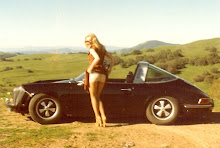I hurried to my son’s gravesite as the sun was coming up
Today was—would have been—was, and now forever will always be was, nevermore is, his birthday, and I would mark it with a vigil until sunset, with a vigil and a song, with a song and a lament, and with these words:
I hurried to my son’s gravesite as the sun was coming up
I brought him flowers, a glass vase, music and incense, an orange
I hurried to my son’s gravesite as the sun was coming up
I brought him photographs, dried fruit and nuts, and my blind Airedale Rex
I hurried to my son’s gravesite as the sun was coming up
I brought him a painted stone, and sips of tequila to share on his birthday
The sun was coming up
My son lies near the top of the hill
Among strangers he lies near the top of the hill
My son lies near the top of the hill
Among strangers he lies near the top of the hill
In the late afternoon came a grieving father
To a grave nearby came a grieving father
A son forever four lay beneath a marble racecourse
An oval with his fifty favorite cars embedded forever
Selected personally by the grieving father
Maintained personally by the grieving father
He worked in silence with his brushes and oils
The headstone cut racecar shape, a heart broken forever
In the late afternoon came the grieving father
Father of a four years forever child
Like a sailor who lies buried where he washed ashore
On this lonely knoll far from any semblance of home
My son lies near the top of the hill
Among strangers he lies near the top of the hill
My son lies near the top of the hill
Among strangers he lies near the top of the hill
----------------
The vigil took place on March 21, 2010, Aaron’s birthday, at a cemetery in El Dorado Hills, California. The four-year-old’s father was one of the few persons to visit the cemetery that day, and no one came to remember my son but me.
I wrote this piece on April 20, 2010.
It was five years ago today, on April 20, 2005 that I received a phone call from the police in Payson, Utah, who told me that my son was found comatose and unresponsive there in his mother’s vacant former home. Aaron had a serious seizure disorder aggravated by years of medical neglect, emotional abuse and abandonment inflicted during his kidnapped years in Utah.
He was pronounced dead on April 25, 2005, and buried near Sacramento on May 3, 2005, a location convenient for his mother and her fifth husband, Aaron’s 3rd stepdad, a man who never knew my son.
There is no closure on a kidnapped child. The death of the child does not create closure.
The death of a kidnapped child only adds another dimension to the tragedy, to the trauma.
A kidnapping is a continuing crime, and so are its consequences.
Aaron’s grave lies no more than twenty miles from Sacramento, from the state Capitol, and it is there that I will seek the introduction of legislation making California the second state in the nation to adopt Aaron’s Law.
Watch me work!










